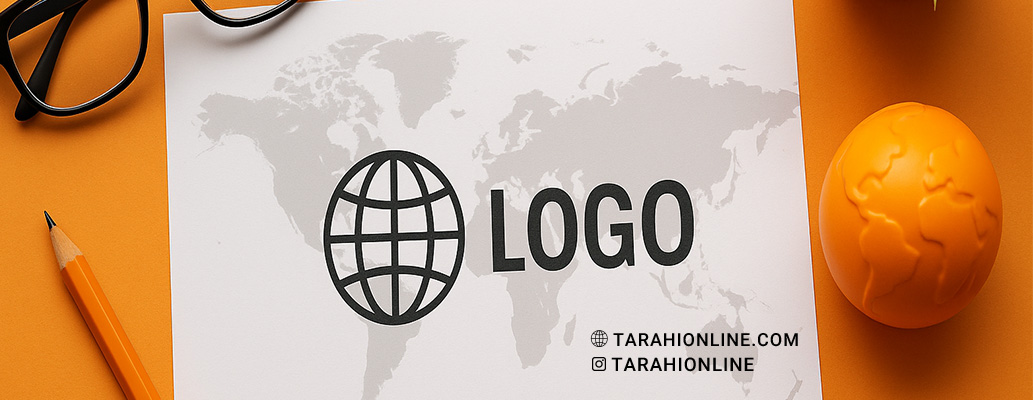
Designing a logo that appeals to and is understood by a global audience is a significant challenge in branding. A global logo must not only effectively convey the brand’s identity but also be compatible with diverse cultures, languages, and values worldwide. This article explores the principles, steps, and key tips for designing a successful logo for a global audience.
Understanding the Importance of a Global Logo
A global logo should possess the following characteristics:
-
Universality: It must be comprehensible across different cultures without causing misunderstandings.
-
Simplicity: Simple logos are memorable and perform well across various media (print, digital, small, or large formats).
-
Flexibility: It should be effective across different platforms and cultural contexts.
-
Brand Identity: It must clearly reflect the brand’s values, mission, and personality.
Steps to Design a Global Logo
A) Research and Analysis
Before starting the design, thorough research about the brand and its global audience is essential:
-
Brand Analysis: Define the brand’s values, mission, and goals. Does the brand focus on innovation, tradition, or sustainability?
-
Understanding Global Audiences: Study the cultures, languages, and preferences of audiences in different regions. For instance, colors have different meanings across cultures (red symbolizes luck in China but may be associated with danger in other cultures).
-
Competitor Analysis: Examine the logos of successful global brands (e.g., Nike, Apple, or Coca-Cola) to draw inspiration from their strengths and weaknesses.
B) Choosing Simple and Universal Visual Elements
-
Simplicity in Design: Simple logos, like those of Apple or Nike, are easily memorable and universally understood.
-
Universal Shapes: Geometric shapes like circles (symbolizing unity), squares (strength), or simple lines are recognized across cultures.
-
Avoiding Culturally Specific Symbols: Steer clear of symbols or imagery that may have negative or inappropriate meanings in certain cultures (e.g., specific animals or religious symbols).
C) Selecting Appropriate Colors
Colors play a significant role in conveying the logo’s message, but their meanings vary across cultures:
-
Neutral Colors: Black, white, and gray are generally neutral and safe across cultures.
-
Universal Colors: Blue (trust and professionalism) and green (nature and sustainability) often carry positive connotations globally.
-
Cultural Testing: Research the cultural meanings of colors in target markets. For example, white symbolizes purity in Western cultures but is associated with mourning in some Asian countries.
D) Simple and Readable Typography
-
Sans-Serif Fonts: Simple, geometric fonts like Helvetica or Futura are legible across languages and cultures.
-
Avoiding Complex Fonts: Handwritten or ornate fonts may appear unprofessional in some languages or cultures.
-
Support for Multiple Languages: If the logo includes text, ensure it remains legible and appealing in various languages (e.g., Arabic, Chinese, or Latin scripts).
E) Designing for Flexibility
-
Scalability: The logo should remain clear and legible in small sizes (e.g., favicons) and large formats (e.g., billboards).
-
Monochrome Versions: Design a single-color version of the logo for use in monochrome printing or busy backgrounds.
-
Print and Digital Use: Create the logo in vector formats (e.g., SVG or EPS) to maintain quality across all media.
Key Tips for Designing a Global Logo
-
Avoid Culturally Sensitive Imagery: Refrain from using religious, political, or culturally specific symbols (e.g., flags) that may be sensitive in certain regions.
-
Test Across Markets: Test the logo in different cultures and languages to ensure its acceptance. For example, ensure the logo’s name or shape does not have negative meanings in other languages.
-
Clear Messaging: The logo’s message should be straightforward and self-explanatory. Amazon’s logo, with an arrow from A to Z, clearly conveys product variety.
-
Inspiration from Global Brands: Study logos of brands like McDonald’s or Adidas, which succeed globally due to simplicity and flexibility.
-
Use Professional Tools: Tools like Adobe Illustrator or Figma are ideal for designing high-quality vector logos.
Testing and Refinement Process
-
Audience Testing: Share the logo with small groups of audiences from different cultures and gather feedback.
-
Legibility Check: Ensure the logo remains clear on light, dark, or busy backgrounds.
-
Platform Adaptability: Test the logo on social media, websites, and printed products to confirm its performance.
Maintaining Brand Identity After Design
-
Brand Guidelines: Create a brand guideline specifying how to use the logo (colors, sizes, spacing).
-
Consistent Usage: Use the logo consistently across all media to strengthen brand recognition.
-
Cautious Updates: If redesigning the logo, apply changes carefully to preserve the brand’s core identity.
Designing a logo for a global audience requires thorough research, the use of simple visual elements, and attention to cultural differences. By focusing on simplicity, flexibility, and the universal meanings of colors and shapes, you can create a logo that is both comprehensible and appealing worldwide. Testing with diverse audiences, using professional tools, and maintaining consistency in logo usage will contribute to its success. By following these principles, your logo can serve as a powerful symbol to strengthen the brand’s identity in global markets.
The Tarahi Online graphic and logo design team, with over ten years of experience in professional graphic and logo design, is ready to assist you and bring your ideas to life. Contact us to submit your request or place an order.

